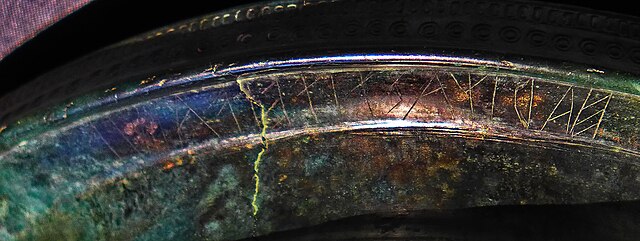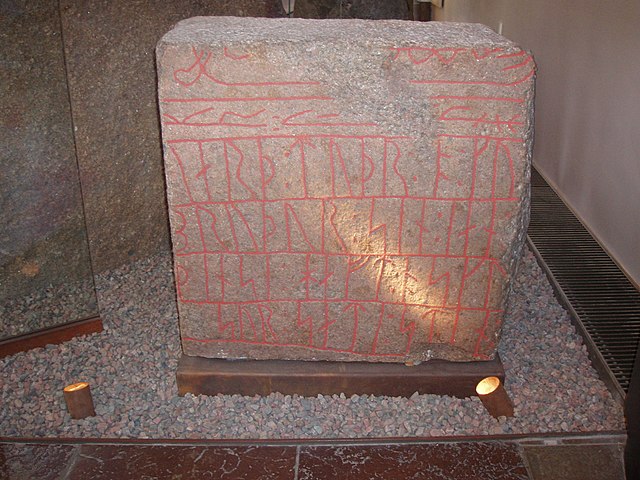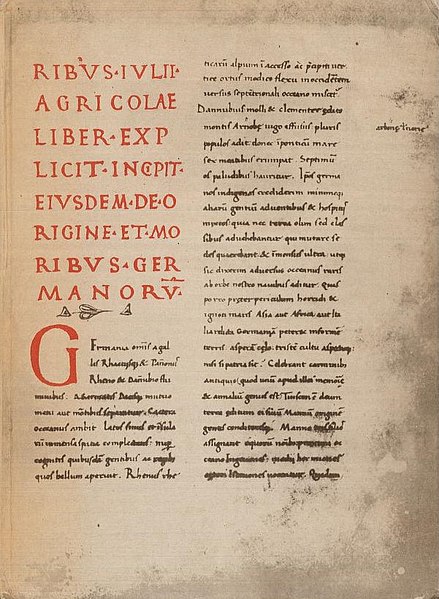An Irminsul was a sacred, pillar-like object attested as playing an important role in the Germanic paganism of the Saxons. Medieval sources describe how an Irminsul was destroyed by Charlemagne during the Saxon Wars. A church was erected on its place in 783 and blessed by Pope Leo III.
Sacred trees and sacred groves were widely venerated by the Germanic peoples, and the oldest chronicle describing an Irminsul refers to it as a tree trunk erected in the open air.
"The destruction of Irminsul by Charlemagne" by Heinrich Leutemann, 1882
A modern interpretation of the Irminsul, erected 1996 in Harbarnsen-Irmenseul municipality (near Hildesheim in Lower Saxony). The sun cross on the top is based on the coat of arms of the village of Irmenseul.
A late 16th century interpretation of an Irminsul bearing the cult image of a god of war and commerce, from Sebastian Münster's Cosmographia
The image identified as representing Irminsul by Wilhelm Teudt on the Externsteine Descent from the Cross relief, rejected by Bernard Mees and interpreted as an elaborate chair
Germanic paganism or Germanic religion refers to the traditional, culturally significant religion of the Germanic peoples. With a chronological range of at least one thousand years in an area covering Scandinavia, the British Isles, modern Germany, and at times other parts of Europe, the beliefs and practices of Germanic paganism varied. Scholars typically assume some degree of continuity between Roman-era beliefs and those found in Norse paganism, as well as between Germanic religion and reconstructed Indo-European religion and post-conversion folklore, though the precise degree and details of this continuity are subjects of debate. Germanic religion was influenced by neighboring cultures, including that of the Celts, the Romans, and, later, by the Christian religion. Very few sources exist that were written by pagan adherents themselves; instead, most were written by outsiders and can thus present problems for reconstructing authentic Germanic beliefs and practices.

A 5th or 6th-century C-type bracteate (DR BR42) showing a figure, likely Odin, above a horse with dislocated legs. This may refer to Odin's healing of Baldr's horse in the Second Merseburg Charm and was likely a talisman.
The B inscription on the Negau helmet, c. 450-350 BCE. This inscription may be the earliest attestation of the name of the Germanic god Tyr's name.
Sønder Kirkeby runestone I (c. 1000). The inscription calls on Thor to hallow something unspecified.
The opening page of the Codex Aesinas of Tacitus's Germania, which gives a large amount of information on Roman-era Germanic religion.








